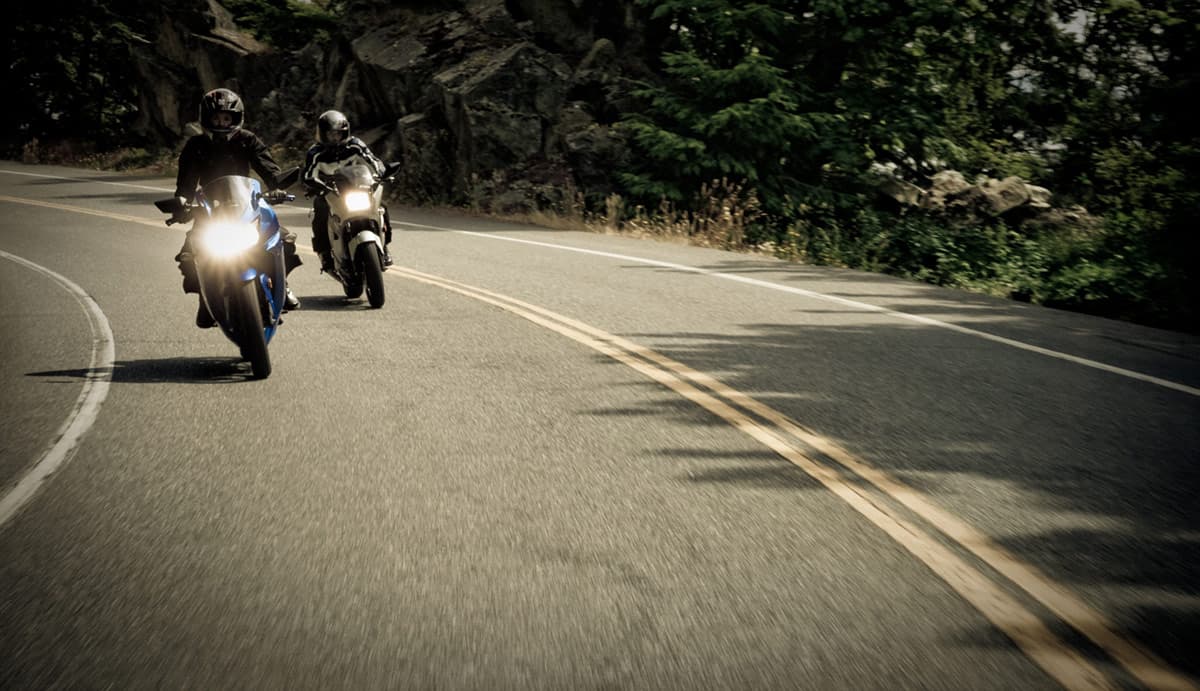So we know that countersteering starts a turn, what’s next?
Countersteering initiates a turn by making the bike lean into the turn. That’s all it does, it is just the first step in physically making the bike turn.
Once the bike is leaning into the turn, the front wheel will actually point itself in the direction of the turn.
ie: if you pushed forward on the left handlebar (turned the wheel to the right) to countersteer, and lean the bike to the left, the wheel naturally falls back to pointing in the direction of the turn.
Because of this, it is important to relax your grip on the bars after initiating the turn.
I have seen several new riders misunderstand the idea of countersteering and try to keep pushing on the inside bar throughout their turn. This results in them leaning farther than intended, and tends to result in them panicking and standing the bike back up again. Not ideal for someone who needs to make a turn to avoid a crash.
Once the correct lean angle has been achieved to safely make the turn, the wheel has put itself in the correct spot to finish the turn. The bike is turning, and all you have to do is not screw it up.
Since the lean angle is a balancing act between gravity and centrifugal force, the lean angle must match the speed. The bike is rolling on the side of the tire which actually has a smaller radius than the center. This means we must add a little bit of throttle to maintain the speed and keep the bike balanced through the turn.
This is often referred to as maintenance throttle.
Too much throttle and the speed/centrifugal force will make the bike go wide.
Too little throttle and the bike becomes unstable.
As you exit your turn, you can either use a little more throttle to help stand the bike up and finish the turn, or use countersteering to stand the bike up.
If you turned left, a push on the right hand bar would stand the bike up again.
For all this talk about what physically happens when turning, I’ve gone this far without even mentioning the most important part of making a turn; Look where you want to go. Everything else tends to happen naturally (to an extent) as long as you are always looking where you want to go, but that’s a topic for another time.
What does it all mean?
After all this rambling, here’s the payoff for people who would rather just know what works and don’t care why.
Step 1
Look where you want to go.
Step 2
Countersteer
Step 2.5
Look where you want to go.
Step 3
Relax your grip on the bars so the wheel can go where it needs to.
Step 3.5
Look where you want to go.
Step 4
Maintenance throttle.
Step 4.5
Look where you want to go.
Step 5
Smoothly add more throttle, or countersteer to stand the bike up again and finish the turn.

